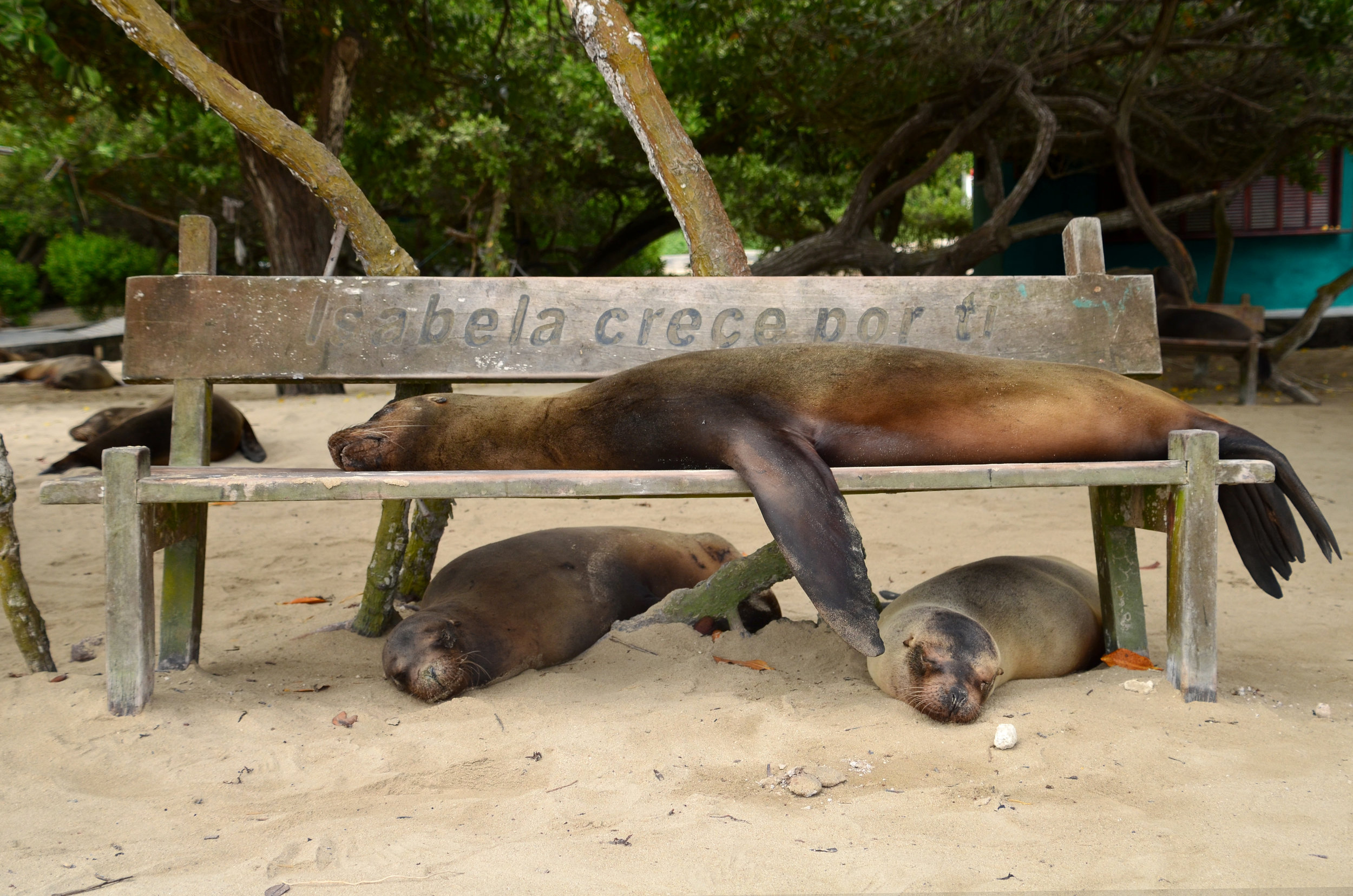Isla Isabela as an Introduction
Galapagos Islands, Isabela
One thing that we loved about Isabela, was that we arrived there first. Its remoteness allowed us to breath it all in, see the calm beaches and the lazy sea lions and iguanas. We were eased into the wild, and we had to discover most of it ourselves. At the breeding center we learned so much about tortoises that we had not seen yet in the wild. We walked passed flamingos as they sat in a red lagoon. We went on a boat tour that introduced us to the huge sea turtles and our first dive into a shark cave. It was also here that the Tuneles showed us the incredible landscape that the Galapagos holds - once made of fire and ash, now a blackened oasis. We just touched the tip of an iceberg with our days on Isabela, and have vowed to come back to see the northern portion of the island.
Greatest Moment: It was on Isabela that we saw our first Galapagos animals! I was so eager to see marine iguanas, though I was not sure how easy it was to see them, or where we needed to go. Happily, and mildly terrifying, I almost stepped on one while leaving the dock. Thankfully I did not, but it was a lesson I would like to share for any that wish to travel to the islands: watch your every step. Endemic animals does NOT mean they are hard to come by while you are actually on the Galapagos Islands!
The morning after we arrived we went to the beach in the morning, eager to immerse ourselves in the wildlife before our first day trip to Tuneles. And we were not disappointed - or maybe it was our first time out exploring on our own in the islands - but we were filled with awe and excitement as we watched the scuttling bright orange and blue crabs, and watched the lava rocks and wooden logs where so many marine iguanas lay warming up their bodies in the morning sun. We had an insane photo shoot, as you will see now. This day was special, because it was our first full day with wildlife. As the afternoon passed, we swam with white tipped sharks, IMMENSE sea turtles, and hopped along the lava Tuneles to see the breeding grounds of the blue-footed boobies.
Worst Moment: To get to Isabella was enough to set anyone on edge. As we left the bus from the airport, a man was shouting “Isabella Ferry”. I looked at my watch and realized that it left in 10 minutes, and to maximize our time, a ferry to Isabella would be absolutely fantastic - if we could catch it. And so without thought or practical reason, we jumped in a truck with three men and they ran us to the office to purchase tickets, and with now 5 minutes left, one man grabbed my bag and shouted “Vamos!” in the effort to get us to rapidly follow him. And so the three of us ran to the pier, where we had to wait with pounding hearts to get on the ferry. With little cash on us, and as I said, cash is KING on these islands, we were asked to pay the boat man an extra $10 as a bribe to get us on the ferry. While it hurt our hearts (though you may think - whats $10? Just wait till you get there), yet there we were, on the ferry in just 10 min of arriving on Santa Cruz. For a two hour ferry ride, that was so bumpy that you were beyond seasickness to even get seasick. We felt cheated, but completely thrilled.
Lesson learned: We spent our first full day in Isabella, where we went on a boat ride to the Tuneles. These are spectacular lava tunnels that formed over 12,000 years ago during the last ice age, when Volcano Negara erupted. Overtime, the weaker parts of the tunnels collapsed, and water came in with the rise of the ocean levels, making it a beautiful landscape of cactus run lava bridges, with crystal clear waters full of sea turtles and diving boobies.
Cultural Insight: Isabella is considered a “sleepy” town compared to Puerto Ayoro and Puerto Baquerizo Moreno. It is not a developed town, and there is no ATM in sight. If you use card you are charged at least 10-20% per transaction due to its remoteness. It has unpaved roads mainly, and there are few roads to choose from to discover what you can by foot. They are marked with wooden signs, and as we jumped on our rental bikes, we followed one that said “Tortoise Breeding Center”. The breeding programs set in place for the tortoises were incredible. We walked from habitat to habitat starting with the baby giant tortoises, to the adolescents, and to the young adults. Tortoises themselves will outlive any human born at the same time as them, most living upwards of 150yrs. Once mature adults, they are released into the wild and do very well. They have no predators at that age, and go along their instinctual path to food, water, and the arid volcano regions where they lay eggs. No tortoises’ eggs will survive in the wild due to introduced species - such as horses, ants, and birds - that crush and annihilate the eggs that are laid. Therefore breeding centers collect wild-laid eggs to incubate them, therefore promoting the continuation of the species. This is an incredibly successful project - one that has since brought wild tortoise populations far from the brink of being threatened.













































































